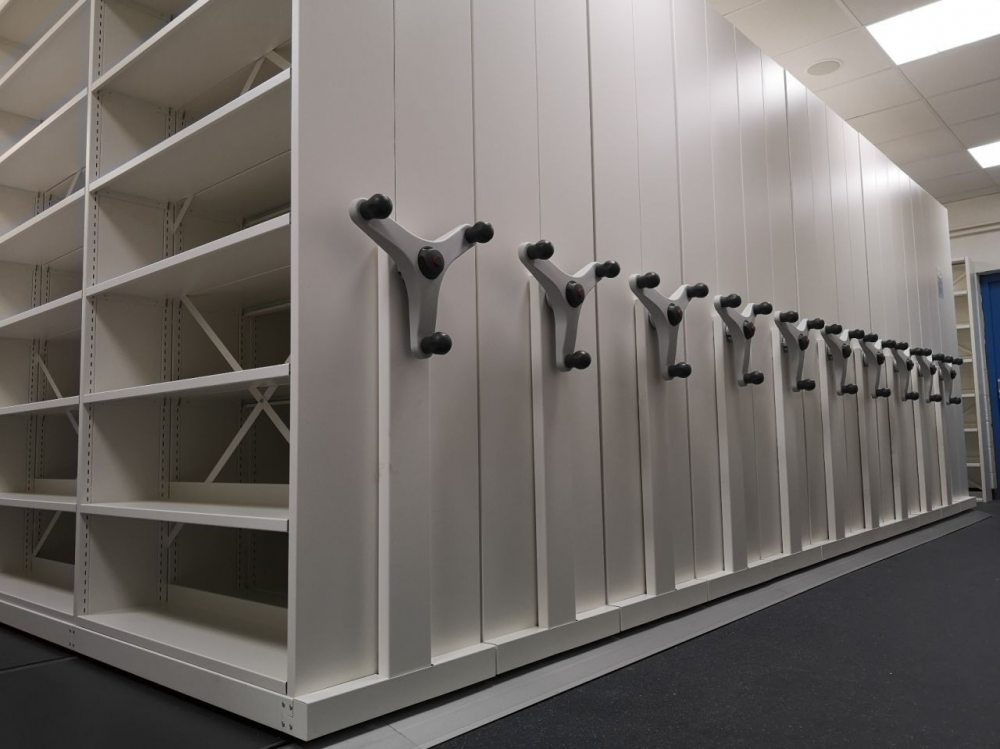Search blog
Recent Posts
- Why Industrial Slim Wardrobes Are Essential in Manufacturing and Factories
- The Best Lockers for Gyms: What to Look for When You Buy Lockers for Fitness Centres
- 8 Industries That Can Benefit from Mobile Phone Lockers
- Revolutionising Medical Storage with Mobile Shelving
- Secure Storage in Days: The Benefits of Express School Lockers
Maximising Your Library Space with Mobile Shelving
Libraries are sanctuaries for knowledge, creativity, and inspiration. However, as collections grow, space becomes a premium commodity. Traditional static shelving can limit the capacity and functionality of a library, but mobile shelving offers a dynamic solution. Let's explore how mobile shelving can maximise your library space and enhance its usability.
Understanding Mobile Shelving
Mobile shelving consists of shelves mounted on tracks. These units can be moved laterally to create access aisles only when needed. By eliminating permanent aisles, the storage solutions can double or even triple the storage capacity of a given area compared to traditional shelving.

Benefits of Mobile Shelving
1. Maximised space efficiency
The primary advantage of mobile shelving is its ability to maximise space. In a traditional library setup, fixed aisles consume a significant portion of the floor area. The units slide together, requiring only a single access aisle at a time. This system allows you to store more books, periodicals, and materials in the same footprint.
2. Enhanced organisation
Mobile storage solutions can be customised to fit the specific needs of your collection. Adjustable shelving heights, varied shelf sizes, and modular components make it easy to organise materials efficiently. This adaptability is particularly beneficial for libraries with diverse collections, including rare books, multimedia, and oversized volumes.
3. Improved accessibility
Despite their compact nature, accessing materials is straightforward. Shelving units can be moved manually with minimal effort or electronically via push-button controls. Some systems even include safety features such as sensors to prevent movement when someone is in the aisle, ensuring a safe browsing experience.
4. Cost-effective expansion
Expanding a library’s physical space can be prohibitively expensive. Mobile shelving provides a cost-effective alternative by optimising existing space. By increasing storage capacity without the need for new construction, libraries can accommodate growing collections and user demands without significant capital investment.
5. Preservation of materials
Proper storage is crucial for the preservation of library materials. Mobile shelving systems often include features such as controlled environments and smooth, gentle movement, reducing the risk of damage to delicate items. This is especially important for archives and special collections.

Implementing Mobile Shelving in Your Library
1. Assess your needs
Begin by evaluating your library’s current storage and space utilisation. Identify areas where mobile shelving could provide the most benefit. Consider factors such as collection size, growth projections, and user accessibility needs.
2. Choose the right system
Mobile shelving systems come in various configurations, from manual to fully automated. Select a system that aligns with your library’s requirements and budget. Consulting with a specialist can help you understand the options and design a system tailored to your needs.
3. Plan for installation
The installation requires careful planning. Develop an installation timeline that minimises disruption to library operations. Ensure that your floor can support the weight of the shelving units and materials.
4. Educate staff and users
Once installed, provide training for staff on how to operate and maintain the shelving system. Create clear signage and instructions for library users to ensure a smooth transition and positive experience.
Conclusion
Mobile shelving is a transformative solution for libraries facing space constraints. By maximising storage capacity, enhancing organisation, and improving accessibility, they allow libraries to grow and evolve without the need for costly expansions. Whether you’re managing a university library, a public library or a special collection, mobile shelving can help you make the most of your space, ensuring that your library remains a vital resource for years to come.
If you’re ready to optimise your library’s storage capacity and enhance user experience, get in touch with Shelving Store today. Our expert team will guide you through the process, from assessment to installation, ensuring a seamless transition to a more efficient and organised library. Contact us to explore the best mobile storage solutions tailored to your needs and take the first step towards a smarter, more dynamic library space.
